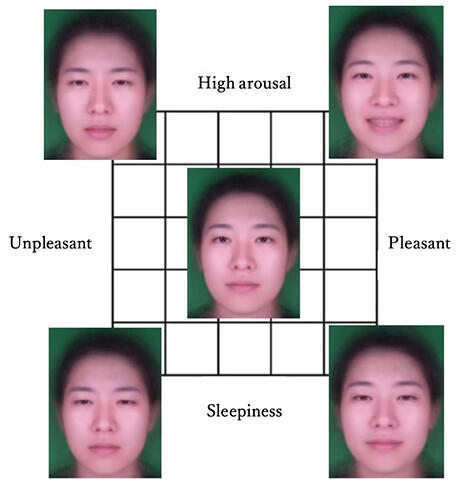The joint research group led by Visiting Researcher Shushi Namba and Team Leader Wataru Sato of the Psychological Process Research Team, Guardian Robot Project, Information R&D and Strategy Headquarters at RIKEN has been working on the emotional dimension (a theory that explains pleasure/displeasure and activation level in terms of two dimensions). They have compiled a database of facial expression videos that is associated with the emotional dimension and includes multiple-angle and depth information. The results were published in the academic journal Scientific Reports.

Provided by RIKEN
Databases of facial expressions associated with emotions have previously been published for applications such as AI development. These facial expression databases are based on a theory that assumes correspondence between emotional categories, such as anger/joy, and specific facial expressions.
However, recent psychological research shows that the association of emotional categories with facial expressions varies considerably between individuals and cultures. Furthermore, it has been found that the relationship between the emotional dimension - i.e., pleasure/displeasure and activation level - and facial expressions may be more universal.
The joint research group asked 48 Japanese participants to fill in a total of 25 event patterns, with five steps of pleasure/displeasure and five steps of activity. Subsequently, participants were asked to recall each event along with their emotional response. The facial expressions at that time were photographed using 10 special cameras that can collect color images and 3D information. The multi-angle images and information depth were subsequently measured.
From the data analysis of the relationship between emotional dimensions and facial muscles, patterns were found to correspond to pleasure/displeasure. Frowning was associated with discomfort, whereas a widening of the mouth was associated with comfort. The facial expression database will be made public for academic purposes. Based on this database, the team is also developing an AI that continuously senses pleasure/displeasure emotions from facial expressions, and the results will be announced soon.
Journal Information
Publication: Scientific Reports
Title: Development of the RIKEN database for dynamic facial expressions with multiple angles
DOI: 10.1038/s41598-023-49209-8
This article has been translated by JST with permission from The Science News Ltd. (https://sci-news.co.jp/). Unauthorized reproduction of the article and photographs is prohibited.




